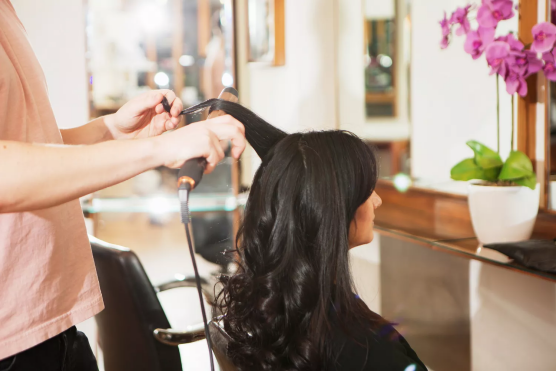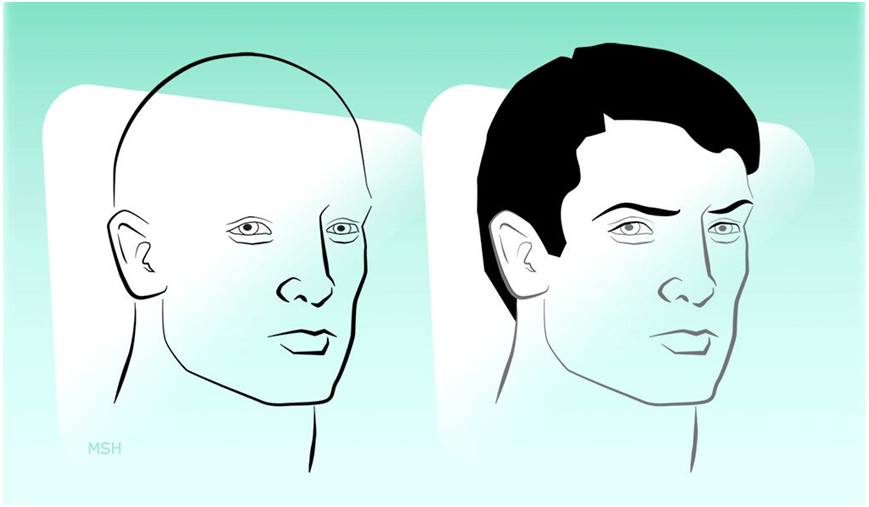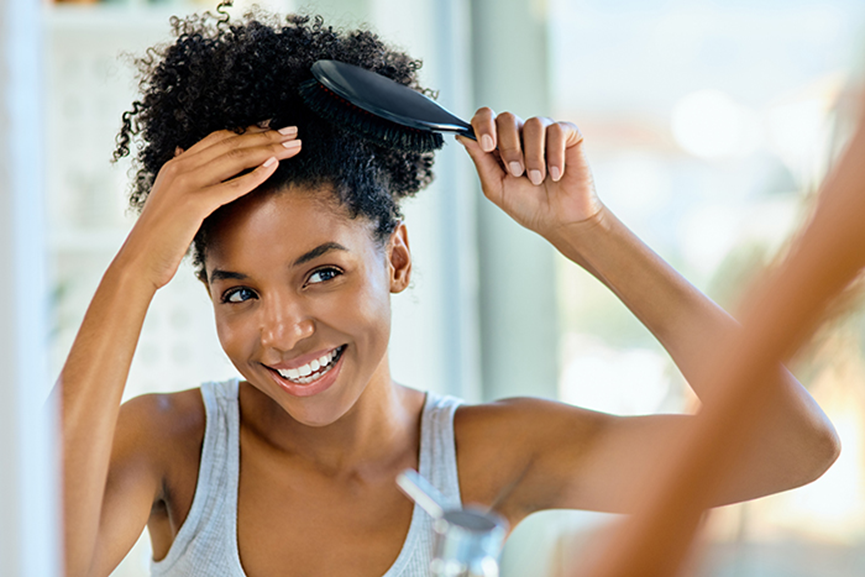By Heather L. Brannon, MD
Updated on November 09, 2022
Medically reviewed by Susan Bard, MD
Hair is much more complicated than it looks. You can feel it at the root when it moves or gets pulled. It protects your skin and traps particles like dust around your eyes and ears. You can express yourself through your hairstyle. If your hair gets damaged, it can renew itself without scarring. Hair covers almost every surface of the human body.
This article gives an overview of the structure of hair. It explains how it grows, what it’s made of, and how it changes.

Nancy Honey/Cultura/Getty Images
How Hair Forms
By week 22 of pregnancy, babies already have all of their hair follicles, or openings in the skin where hair grows.1 This totals about five million hair follicles, with about one million on the head and 100,000 on the scalp. This is the largest number of hair follicles you will ever have.
Follicles do not continue to grow during life. In fact, as we get older, the number of hair follicles per square inch decreases as our bodies stretch and grow.
Structure of Hair
A piece of hair may look simple, but it’s one of the body's most complicated structures. Hair is made up of two separate structures. The hair follicle is the part below the skin, and the hair shaft is what you see above your skin.
Hair Follicle
The hair follicle is where your hair begins to grow and is held in place. It’s a stocking-like structure that starts in the epidermis, your skin’s top layer. It extends to the dermis, your second layer of skin.
At the bottom of the follicle, a piece of tissue called the papilla contains tiny blood vessels (capillaries). These nourish the hair root to keep it growing. The follicle also contains the germinal matrix, where cells produce new hairs.2
The bulb is the rounded structure deep in the skin at the root of the hair that surrounds the papilla and germinal matrix. It has several types of stem cells, which develop into specialized cells and can renew themselves over a long period of time.3
The follicle is lined by an inner and outer sheath that protects and molds the growing hair. The inner sheath follows the hair and ends just before the opening of the oil gland, or sebaceous gland. The outer sheath continues all the way up to the gland.
The sebaceous gland produces sebum, or oil, which is the body’s natural conditioner. More sebum is produced during puberty, which is why acne is common during the teen years. Sebum decreases with age, causing the skin to become dry.
The arrector pili muscle, a tiny bundle of muscle fiber, is attached to the outer sheath. When the muscle contracts, it causes the hair to stand up, otherwise known as goosebumps.
Recap
The hair follicle is the stocking-like structure under the skin where your hair is formed. The follicle contains sheaths that mold the hair, oil glands that condition hair, and cells that produce new hair.
Hair Shaft
The hair shaft is the part of the hair that we can see. Once the hair grows beyond the skin’s surface, the cells aren’t alive anymore. It’s made up of three layers of keratin, a hardening protein. Those layers are:
· The Inner Layer: This is called the medulla. Depending on the type of hair, the medulla isn’t always present.
· The Middle Layer: This is called the cortex, which makes up most of the hair shaft. The medulla and the cortex contain pigmenting cells responsible for giving hair color.
· The Outer Layer: This is called the cuticle, which is formed by tightly packed scales in an overlapping structure that resembles roof shingles. Many hair conditioning products are formulated to clean the cuticle by smoothing its structure.4
Recap
The hair shaft is the part of hair we see above the skin. It can have three layers—the medulla, the cortex, and the cuticle.
Why Do Some Children Get Uncombable Hair Syndrome?
The Growth Cycle
The hair on your scalp grows less than half a millimeter a day.4 The individual hairs are always in one of three stages of growth: anagen, catagen, and telogen.
· Stage 1: The anagen phase is the growth phase of the hair. Most hair spends several years in this stage. A new hair pushes the old hair that stopped growing up and out of the follicle.2 The anagen phase for eyelashes, eyebrows, and leg and arm hair is very short—about 30 to 45 days.5 That’s why those hairs tend to be shorter than the hairs on your head.
· Stage 2: The catagen phase is a transitional stage lasting a few weeks, and 2% of all scalp hairs are in this phase at any given time. During this time, growth slows down, and the outer root sheath shrinks and attaches to the root of the hair. This becomes a club hair, which is a hair that has stopped growing.2
· Stage 3: The telogen phase is the resting phase, which lasts for about three months. It accounts for 10% to 15% of all hair. During this phase, the hair follicle is at rest and the club hair is completely formed.2 Pulling out a hair will reveal a dry, white material at the root.
Recap
There are three stages of hair growth. In the anagen phase, hair on the scalp grows for three to four years. In the catagen phase, hair slows down its growth. In the telogen phase, hair stops growing and stays in place until a new hair pushes it out.
How It Gets Its Shape
Some people have curly corkscrew hair, while others have thick, straight, shiny hair. This appearance is due to the shape of the hair. Straight hair has a mostly circular circumference. Strands of curly hair are flat. The more circular the hair shaft, the straighter the hair. The flatter the shaft, the curlier the hair.
The cross-sectional shape of hair also determines the amount of shine that the hair has. Straighter hair is shinier because sebum from the sebaceous gland can easily travel down the hair. With curly hair, the sebum has trouble traveling down the hair, making it look more dry and dull.
As you get older, your hair can change color, texture, and thickness. It can even change some of its location, with too much in some areas and too little in others.
Recap
Your hair’s appearance is determined partly by the shape of your hair. If your hair has a circular circumference, it will be straight. If it’s more flat than round, it will be curly.
Summary
Your hair consists of a hair follicle and hair shaft. The hair follicles in your skin contain living cells to allow your hair to grow. The shaft—the part of the hair we see—is made up of dead cells and consists of three different layers. As a piece of hair grows, it goes through three phases before it sheds and a new one grows.
A Word From Verywell
You can help keep your hair healthy by taking care of your overall health. Eating nutritious foods is one way to improve hair from the inside out. Check with your doctor if you have questions on your hair’s growth and how it might be impacted by your health.







Post comments